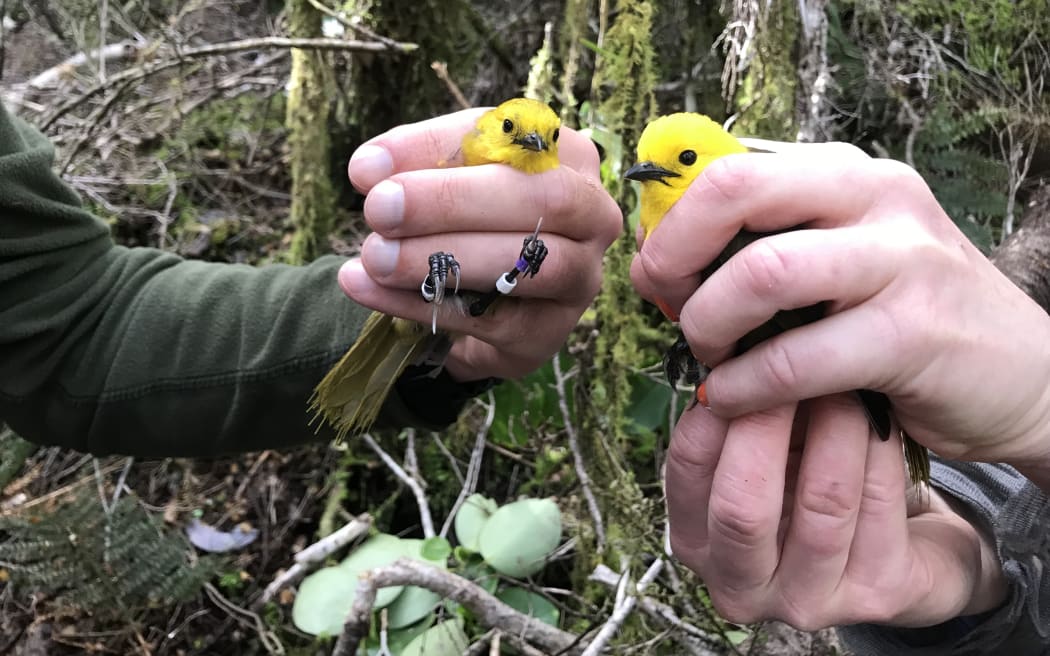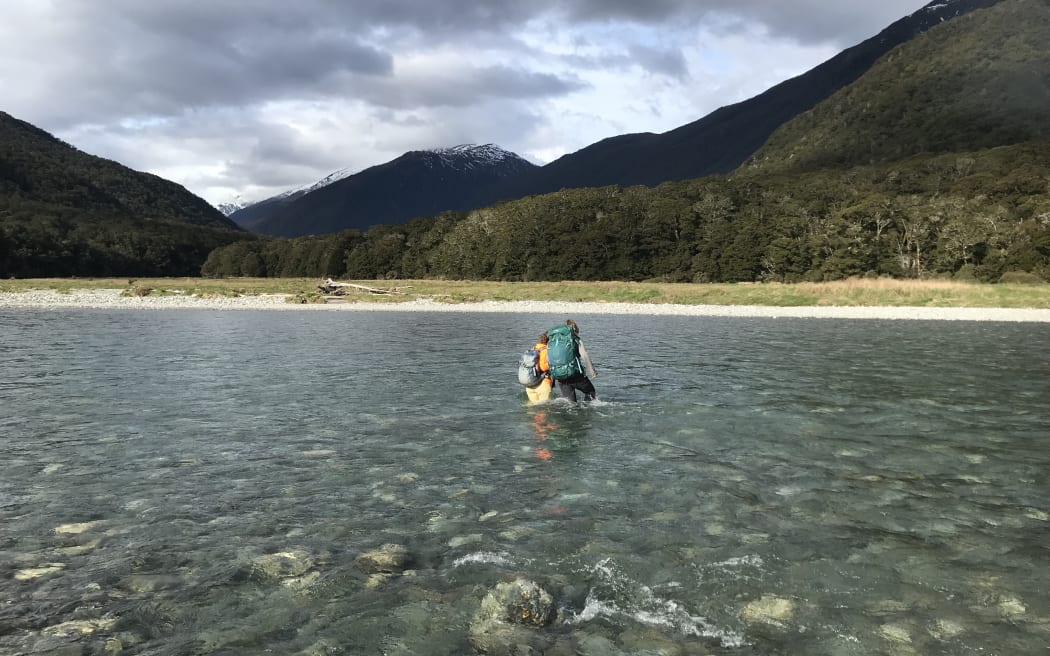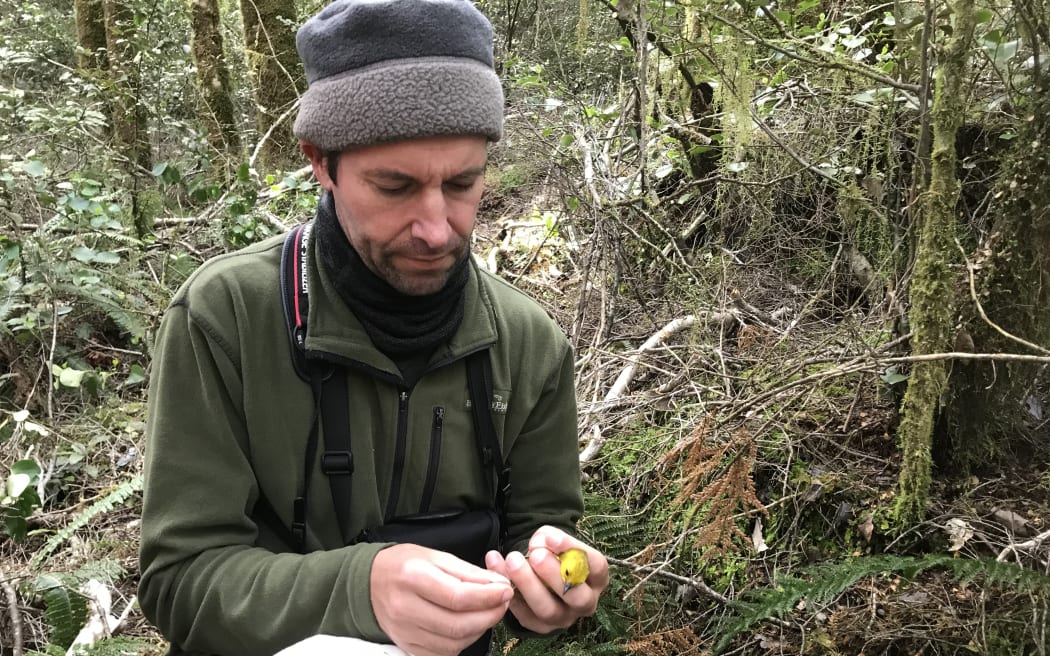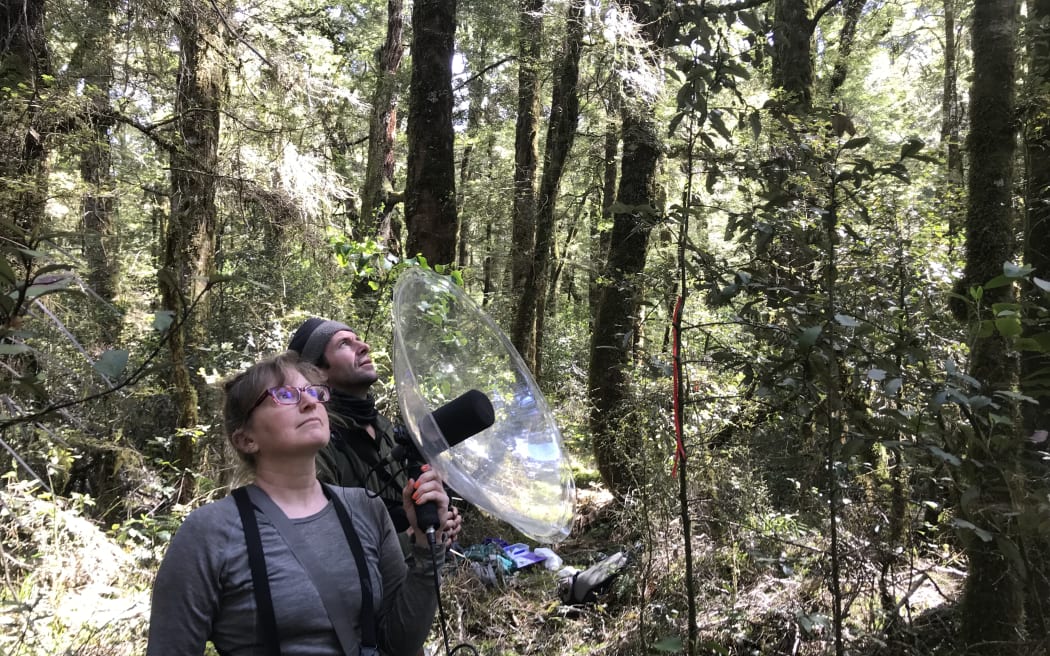
Two newly banded mohua. Photo: Claire Concannon / RNZ
Follow Our Changing World on Apple Podcasts, Spotify, Stitcher, iHeartRADIO, Google Podcasts, RadioPublic or wherever you listen to your podcasts
A ‘rat plague’ has come to the beech forest near Makarora, and Jo Tilson is worried for the little population of mohua who call this area home.
The ‘bush canary’
In the 1800s mohua were one of the most abundant forest birds, found in different forest types. Their bright yellow heads (hence their common English name, yellowhead) and yellow-feathered bellies led them to being dubbed the ‘bush canary’ by European settlers.
But – and you know this story – forest clearance and introduced predators reduced their population and range significantly. These little songbird insectivores nest in holes in trees, and so are vulnerable to stoats and ship rats. Some mohua have been transferred to predator-free offshore islands where they are doing well, but on mainland New Zealand there remains just a few small, scattered populations living in South Island beech forest.
One of these can be found just north of Makarora, near Cameron Flat, in the silver beech forest that lines the west side of the Makarora River as it runs alongside State Highway 6 through the Haast Pass.

Crossing the Makarora River. Photo: Claire Concannon / RNZ
It takes a village
Jo works as a biodiversity coordinator for Southern Lakes Sanctuary, focused on species and predator monitoring for the Mātukituki and Makarora hubs. Southern Lakes Sanctuary is essentially an umbrella organisation that has wrapped around existing conservation groups to enable a regionwide effort.
In this area, that includes a highly motivated group of 60 or so trapping volunteers from the Central Otago Lakes Branch of Forest & Bird. With the first trap lines established in 1998, the group has been “sustainably harvesting predators,” as volunteer Mo Turnbull puts it, for more than 25 years, to help the local mohua population hold on.
But it’s not about dead rats, Mo says, it’s about live mohua. So how are they doing?

Mo Turnbull, Forest & Bird volunteer, with a trap. Photo: Claire Concannon / RNZ
Cryptic in the canopy
Transects run by the Department of Conservation and the sanctuary across the years indicate that the mohua numbers in the area are declining. But without a complete census it’s hard to have the full picture of what’s going on.
Despite their flashy yellow colour, and loud song, these birds are difficult to count. They spend most of their time high in the canopy, where they often fly with their cousins, pōpokotea whiteheads and pīpipi brown creepers.
To properly monitor them, this year the sanctuary is doing the work of catching and banding all the birds – or at least the territorial ones, which can be coaxed down from the canopy by playing mohua calls as a challenge.

Grant Maslowski bands a mohua. Photo: Claire Concannon / RNZ
Alongside this, they are collaborating with Atarau Sanctuary, who are developing a new monitoring tool using machine learning to identify individual birds from acoustic recordings. To train the algorithm, Dr Laura Molles says, you must first provide it with labelled data, which is why she is spending some of her time following banded mohua through the forest with recording equipment to capture their song.
The promise is a non-invasive monitoring tool that could let you know not just species presence and absence, but numbers and movements of individual birds.
However, there’s a lot of work to do to get there.
Listen to the episode to learn more about this population of mohua in Makarora and the team of people who are looking out for them, as well as the potential of this new acoustic monitoring tool.

Laura Molles records a singing mohua while Grant Maslowski identifies the banded bird. Photo: Claire Concannon / RNZ
To learn more:
-
Visit the Atarau Sanctuary or Southern Lake Sanctuary websites, and check out the mohua data visualisation map, and listen to recordings, here.
-
Listen to the 2019 episode ‘Science of a ‘mega mast’ & planning wide-scale predator control’ to learn more about DOC efforts against predator plagues following mast years.
-
In ‘What bird is that’ researchers discuss the complexities of training a computer programme to identify species.


